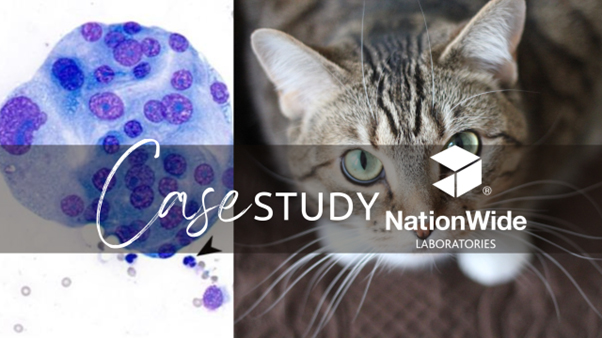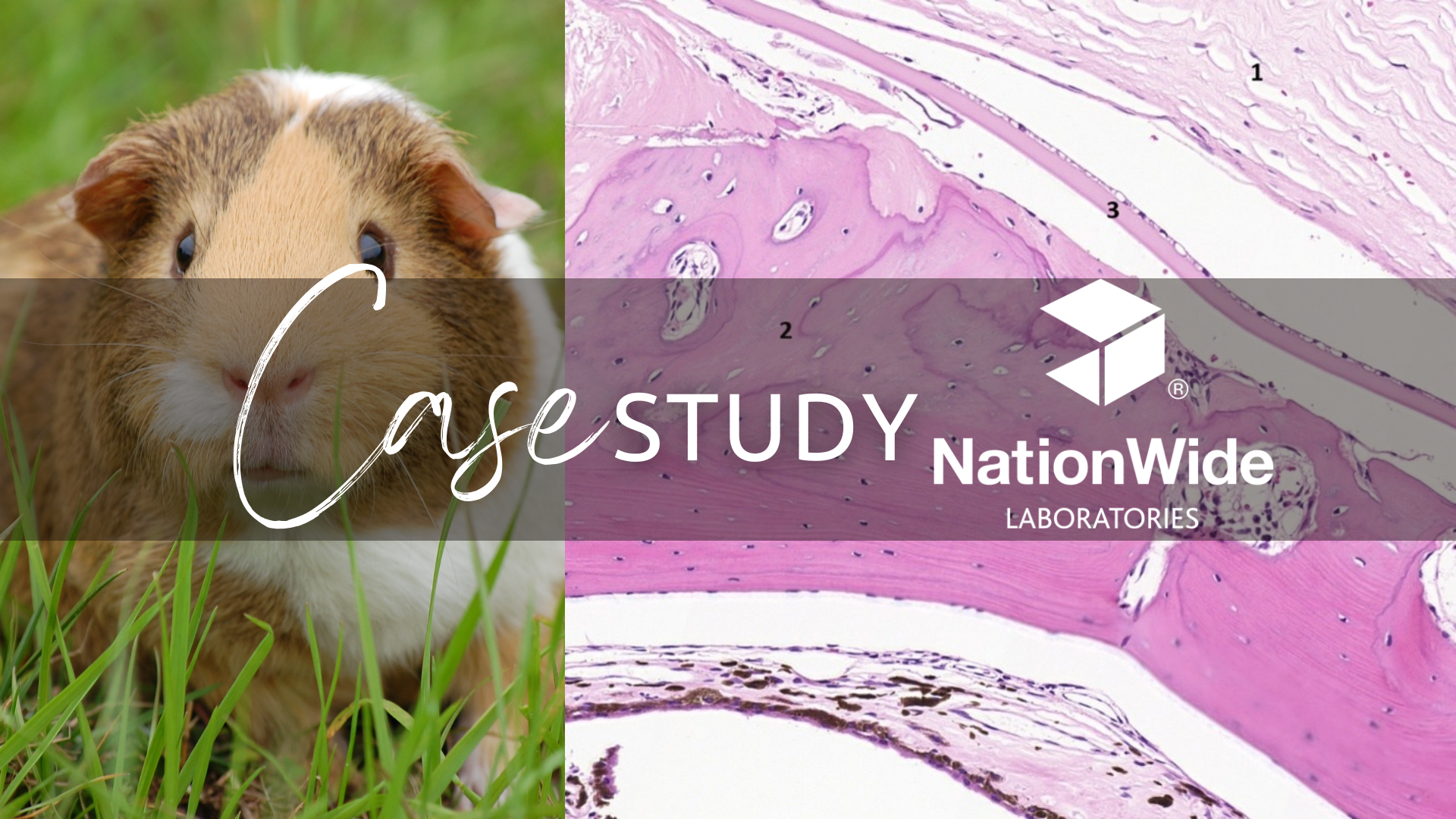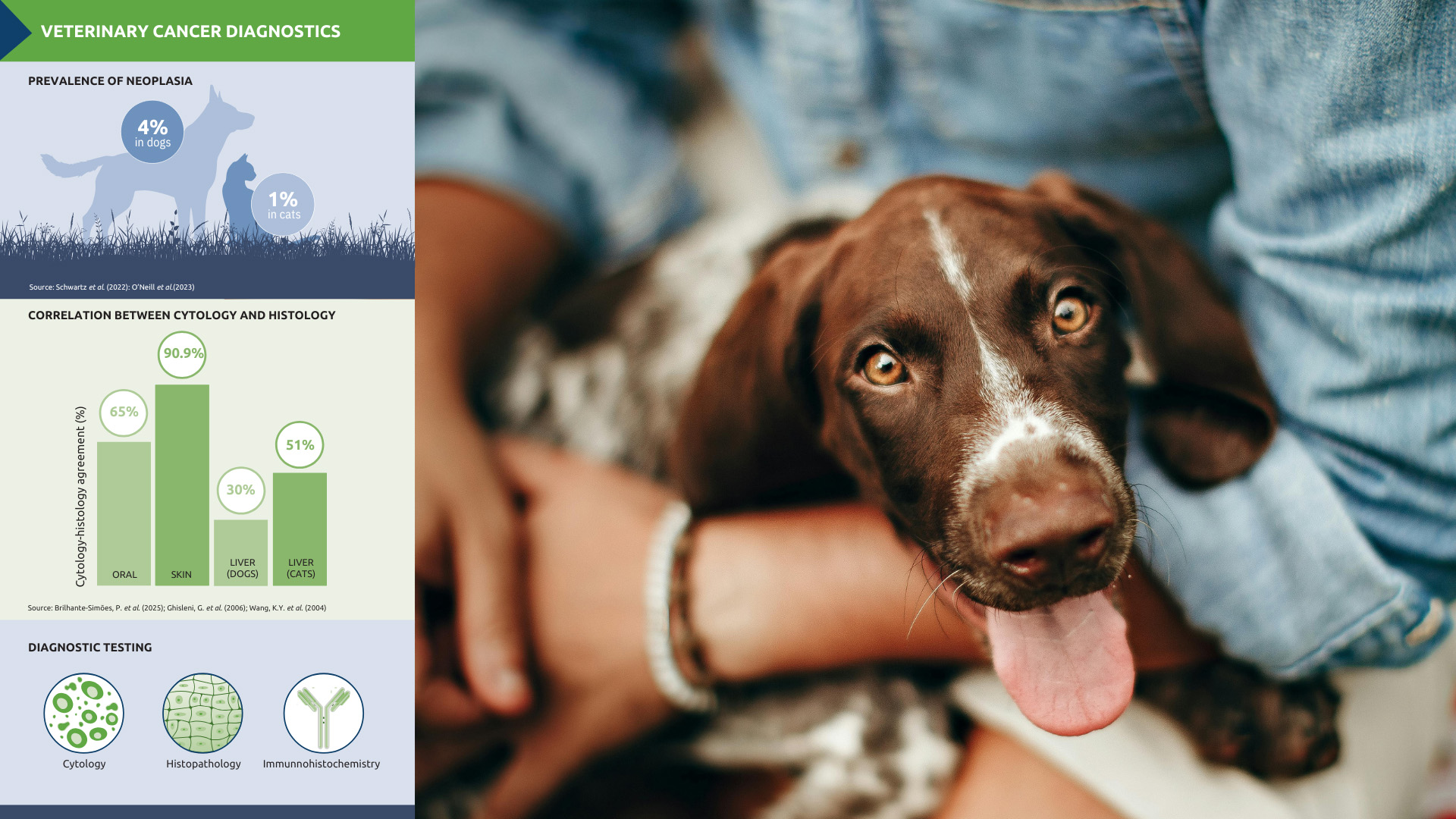NationWide Laboratories case study: uterine adenomyosis in a dog

Author: Karina Fresneda
MICROSCOPIC
A section of uterus was submitted to the laboratory. The wall was thickened with multifocal irregular cystic cavities. Microscopically the myometrium was diffusely thickened and contained numerous cystic dilated endometrial glands, that were lined by a partially keratinized stratified squamous epithelium. The lumen of these glands often contain moderate numbers of neutrophils admixed with keratinized nucleated and anucleated superficial epithelial cells. The endometrium contained multiple cystic dilated hyperplastic endometrial glands, lined by a single layer of flattened to cuboidal cells with no evidence of cellular atypia.
DIAGNOSIS
Uterine adenomyosis and cystic endometrial hyperplasia, uterus
COMMENT
Adenomyosis is a nonneoplastic hyperplastic lesion, characterized by the presence of endometrial glands and stroma within the myometrium, and the effect generally is minimal in domestic animals that do not menstruate. It is generally rare in domestic animals but can be observed in dogs, particularly those with cystic endometrial hyperplasia. In some cases, it is the malformation and in others it arises by hyperplastic overgrowth of the endometrium. This results in thickening of the myometrium, often near the cervix, and may lead to the formation of cysts. Microscopically, endometrial glands, stroma or both are within the myometrium. While adenomyosis in domestic animals shares similarities with endometriosis in menstruating primates when it occurs within the myometrium, it is important in veterinary pathology to distinguish it from other uterine lesions.
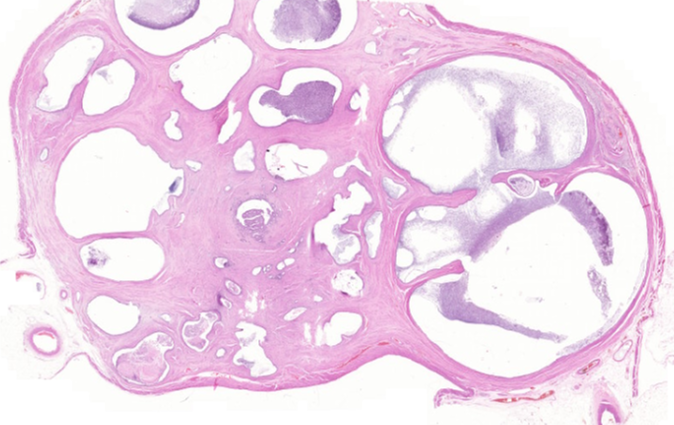
Adenomyosis
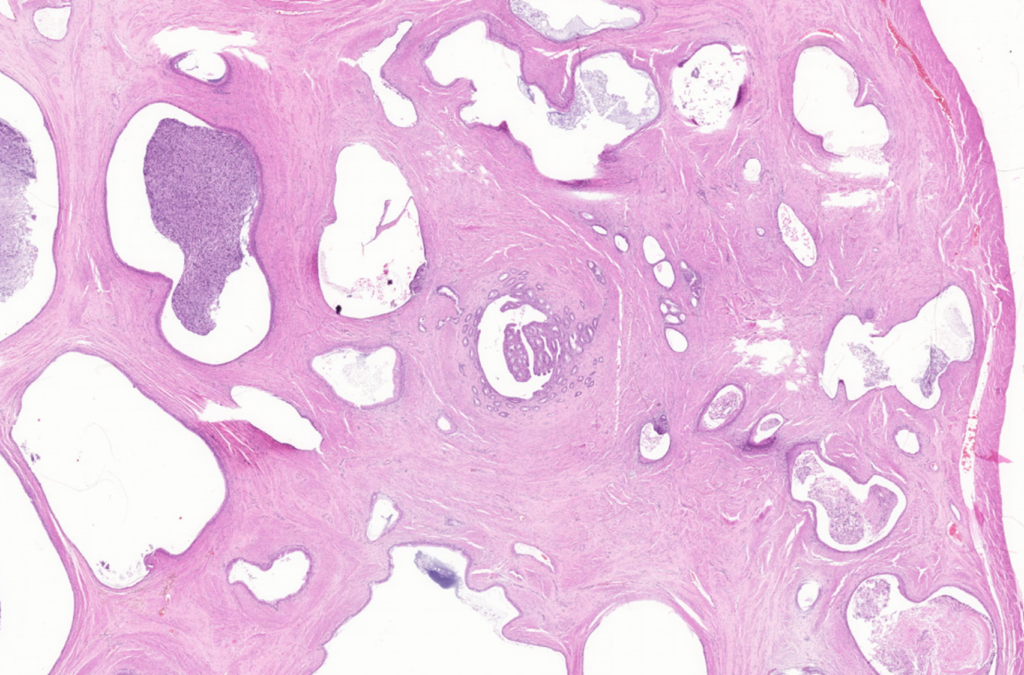
Adenomyosis
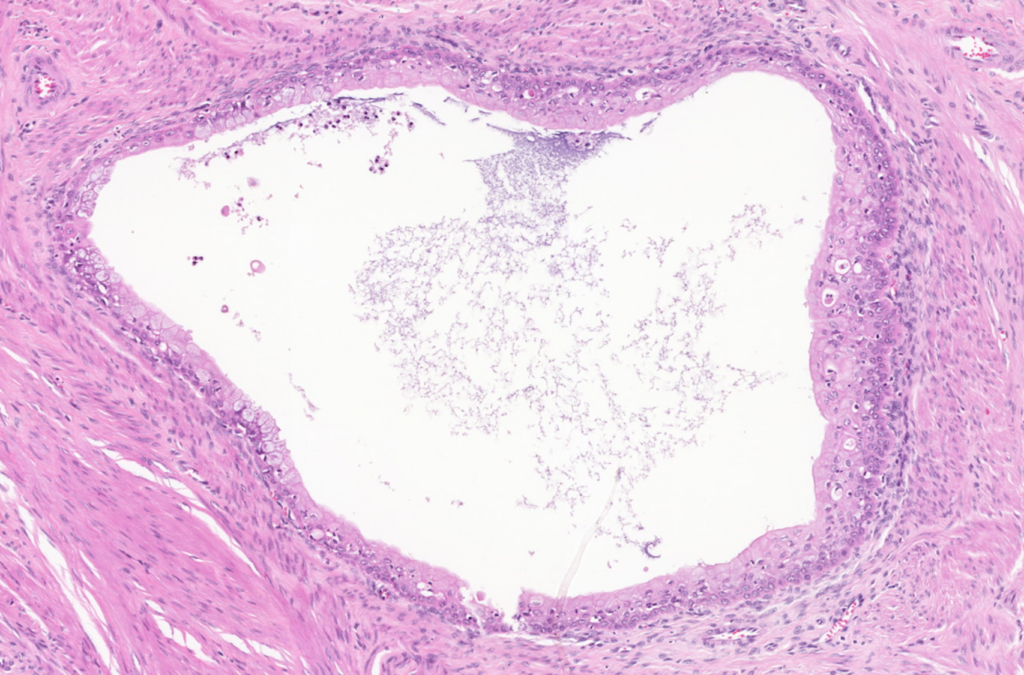
Adenomyosis
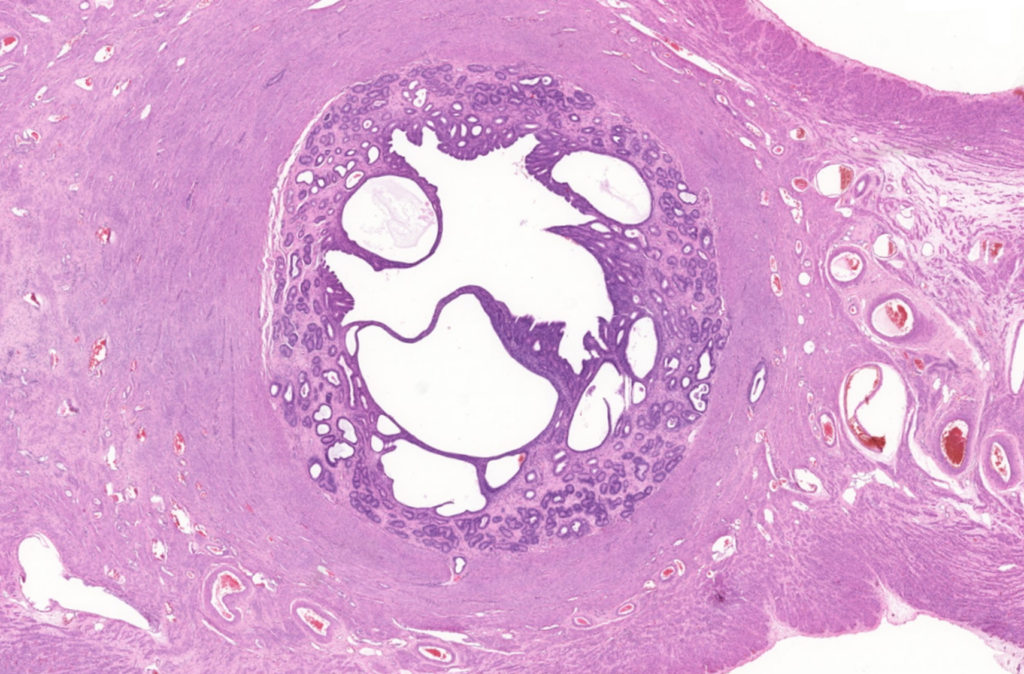
Cystic endometrial hyperplasia
Reference:
Pathology of domestic animals. Volume 3. Jubb, Kennedy and Palmer’s. Sixth edition. 2016. Page 385
Pathologic bases if veterinary disease. James F. Zachary. Seventh edition. 2022. Page 1282
Uterine Adenomyosis in Beagle Dogs. Laboratory Animal Research 26(2):211. January 2010.
